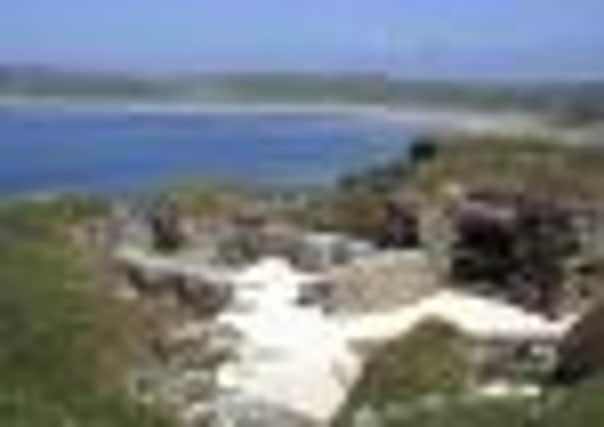Travel: An isolated cottage gives new meaning to island life, as the centuries fade away on Orkney


Ours begins in Scrabster, a small, satisfyingly-named harbour settlement that hunkers at the very top of mainland Scotland.
It’s all icy winds, 50 shades of grey, but, thankfully, an excellent café. And out there in the distance, land disturbing the horizon; low-lying and insistent or, as George Mackay Brown described his beloved Orkney, “like sleeping whales... beside an ocean of time”.
Advertisement
Hide AdIt seems so very far north, and indeed Orkney – a misleadingly singular name for an archipelago of some 70 islands – is closer to the Arctic Circle than it is to London.
Scrabster is one of just three points in Scotland that take you to Orkney, and the fastest crossing by far: just 90 minutes to Stromness, a traditional seaside town of wonky stone houses and precipitous lanes. It’s also a notoriously rough crossing, pushing through where the Atlantic and North Sea tides meet in heaving battle. Our ferry is called the Hamnavoe, an old Norse word meaning “safe harbour”.
We arrive after 10pm, and – lucky us – a mirror-smooth crossing. Stromness in the dark is but a cluster of winking lights. On the way back, by wan September daylight, we will be able to see its charm, more pock-marked than picturesque and all the lovelier for it. We will peer into Scapa Flow, where Viking ships anchored more than a thousand years ago and battleships sank during the world wars. And from the ferry we will marvel at the Old Man of Hoy, the seastack that points skywards from sucking seas.
For now we have to negotiate the full length of mainland Orkney, from south-west to the far eastern peninsula of Deerness. The roads are brilliant and the drive takes less than an hour.
Arriving at our destination – the sumptuously renovated East Denwick Old Farm – is like arriving at the end of the world. The following day, in comparatively bustling Kirkwall, we will get a measure of just how isolated it is when a local asks where we’re staying. “Ooooooh,” she will say, sucking her teeth. “Right out in the sticks.”
East Denwick is the last house on the peninsula, situated in a few acres of green fields, and you’ve never seen green so green as in Orkney. Nothing beyond, in any direction, but land, cliff, sea, cave, bird, and sky. The farm looks to the northern isles of Shapinsay, Stronsay and, on really clear mornings, Sanday. North Ronaldsay, where the hardy little sheep graze on seaweed, is out there too, but beyond the strength of our eyes.
Advertisement
Hide AdMainland Orkney is very green and low, as though the sea could consume it at any time. It means that wherever you are, you can see all sorts. Cows, rectangular and muscled, the most I’ve ever seen. Geese flying in formation. The odd curlew waddling through grass, beak like a miniature scythe. Skies forever on the move. The din of fulmars on a cliff walk and always, always the search for seals. And, no less thrilling for being manmade, the shock of the gas flare burning boldly on Flotta… a reminder that such fertile lands are never as wild as we like to think.
Of course they aren’t. People have inhabited Orkney for more than 5,000 years. There are so many reminders of this deep history in the landscape, you start to get complacent. Your sense of time stretches so that the Vikings seem like new kids on the block, and the Iron Age so last century.
Advertisement
Hide AdEverything pales into present compared with Skara Brae. The remains of a 5,000 year old Neolithic village, it was revealed to the world after a particularly violent storm in 1850. Today you can see actual houses above a sandy bay, complete with stone dressers, beds, the lot. It is older than Stonehenge, the Great Wall of China and the Pyramids. It is mindblowing, like so much on this island.
Food becomes a preoccupation and we spend most days walking and then raiding Orkney’s formidable larder. Beef and hot smoked salmon from Donaldsons of Orkney in Kirkwall. Bannocks and mackerel pate at various funny-peculiar tea rooms. Sweet and crumbly Grimbister cheese with sour apple chutney. Ales from the Orkney brewery and whisky from Highland Park distillery.
There is so much to do, so little time. Everyone says you must get off the mainland and explore some of the 20 inhabited isles. But how can you in five days when there is so much to keep you here? There is only one thing for it. Just as folk have been doing for thousands of years, seduced by Orkney’s endless possibilities in the middle of some of the world’s roughest seas, we will have to keep coming back.
THE FACTS
East Denwick Old Farm sleeps four and prices per week start at £450, www.unique-cottages.co.uk